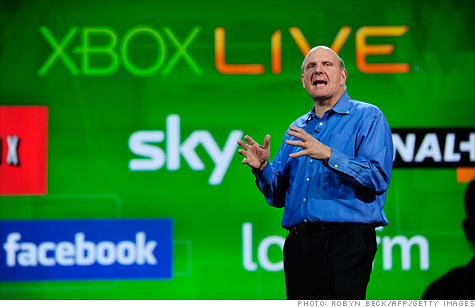5 Reasons People Resist Change

- Those who thrive on change
- Those who avoid change
Now, I realize that there is a third category: people who want change but are not willing to do anything risky to achieve it.
They are intellectually curious and enjoy newness yet they hinder initiatives with their indecision and procrastination. Repeatedly (and predictably), they reject new ideas as relentlessly as they express concern that too much has stayed the same.
In short, the second and third types resist change. They avoid, dismiss and sabotage those who want to move forward in any of these areas.
- Pursuit of a new customer segment
- Deployment of a new technology or work process
- Launch of a new product
- Introduction of new techniques for sales, marketing and customer service
1. Productivity will plummet and stress will skyrocket
After years of mastering her job duties, she has an efficient routine. When employees bring problems to her attention, she gives direction by following a self-developed, mental image of a decision tree with a limited number of variables. The simplicity of her day-to-day tasks is comforting. The knowledge that she can easily complete assignments on time, on budget and on spec gives her confidence.
Changes bring complexity to her job. Decisions require new road maps. She anticipates that the mental heavy lifting will be exhausting. This extra time and effort will certainly detract from her productivity, output and peace of mind.
Fix: Establish a new performance metric when changes occur. If possible, move away from activity-based measures to assessments of creative output and profitable results. Give her enough time to assimilate new ways of doing her job and plenty of space to solve problems that require intense concentration.
2. Embracing change means admitting past mistakes.
He believes that championing new work processes or pursuing new customer segments mean public acknowledgement that previous procedures caused errors. Or perhaps marketing programs didn’t deliver the right kinds of customers.
Fix: Reassure him that the proposed changes reflect technological advances, emergence of new segments or other recent developments that have impacted the business. Emphasize the need for continual renewal, not as an indictment of the past, but as a strategy for ongoing success.
3. Failures are not occasions for learning.
She is not afraid of failure per se, and accepts that changes may not bring immediate results. What she fears is her inability to understand which factors influence success. Navigating change is like falling into an abyss rather than interpreting clues on a hidden-treasure map.
For example, she might express concerns about updating the features of a best-selling style. Her hesitation to introduce modifications has nothing to do with a perceived inconsistency between product characteristics and customer desires. Instead, her resistance masks her lack of analytical and problem-solving skills.
In the past, she has blamed failures on economic conditions, poor timing and customer misunderstanding. Unable to pinpoint (or at least guess) the reasons for certain outcomes and then make adjustments that improve results, she avoids change altogether.
Fix: Teach her how to learn from her mistakes, whether they lead to full-blown failures or lower-than-expected performance. Encourage her to articulate assumptions and predict likely outcomes of proposed changes. Then show her how to evaluate results in light of the accuracy of these assumptions.
By giving her the skills to learn from potentially risky moves, she should feel more comfortable with change and confident about her ability to correct missteps and move forward.
4. Difficult problems arise from change.
He is eager to positively impact the company but is reluctant to implement new ideas. The side effects of change may involve handling situations that he does not fully understand. He may have to deal with consequences that he cannot predict or control.
For example, he believes that staking a claim to the company’s online listing could be beneficial to marketing efforts. But the prospect of having to interact with customers who rate the business is unfamiliar and a little frightening. So he downplays the benefits. He wants to dodge possible headaches and avoid revealing his lack of competency in this area.
Fix: Identify known negatives that will likely surface as byproducts of changes. Investigate, identify and implement best practices for dealing with these situations. Acknowledge that unpredictable things may happen, ask him to alert you to these instances as soon as they occur, and assure him that you will handle problems quickly.
5. Preserving status among colleagues and employees is key.
She enjoys her title, position description and place in the organizational chart. The existing hierarchy allows her to get things done. Her colleagues and employees respect her, and she does not want to jeopardize these relationships for shaky ones with another group. She especially wants to avoid scenarios that put her in conflict with long-time associates.
Fix: Tell her the truth. Her current job and existing relationships are becoming irrelevant as the competitive landscape changes or key customers merge and go out of business. The new organization will challenge her alliances but also position her and the business more favorably in the long term. At the same time, uncover and address any areas of conflict among work groups, and coach her on methods of interacting with different personalities.







 Keynotes from Microsoft CEO Steve Ballmer have kicked off the last three CES shows. But now the company says its product news doesn't align with the show's timing.
Keynotes from Microsoft CEO Steve Ballmer have kicked off the last three CES shows. But now the company says its product news doesn't align with the show's timing.





 The setup I talked about above is only one way to get free or low cost TV content. Another way we get free content at home is through the free over-the-air HDTV channels that are now available to everyone who has a
The setup I talked about above is only one way to get free or low cost TV content. Another way we get free content at home is through the free over-the-air HDTV channels that are now available to everyone who has a 
